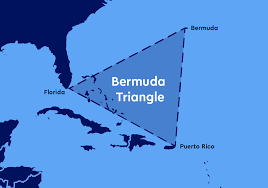India, with its vast coastline of over 7,500 kilometers, plays a significant role in international maritime trade. Ports are the gateway for over 90% of the country’s trade by volume and 70% by value. Among these, Jawaharlal Nehru Port (JNPT), also known as Nhava Sheva, stands as the largest container port in India. Situated in Navi Mumbai, Maharashtra, JNPT has grown to become a hub for containerized cargo, playing a crucial role in India’s economic development and international trade network.
Overview of JNPT
Commissioned on 26 May 1989, JNPT was established to relieve pressure on the Mumbai Port, which was congested and unable to handle the increasing container traffic. Since its inception, JNPT has transformed into the premier container-handling port of the country, catering to a wide variety of export-import trade and shipping needs. It handles about 50% of India’s containerized cargo, making it the backbone of Indian port infrastructure.
Geographical and Strategic Location
JNPT is strategically located at the eastern shore of Mumbai in the state of Maharashtra. It enjoys excellent connectivity to the hinterlands of Maharashtra, Gujarat, Madhya Pradesh, Rajasthan, Punjab, and even the northern parts of India. Its location makes it a preferred choice for international shipping lines and exporters/importers.
The port is accessible by road and rail networks, and the Dedicated Freight Corridor (DFC) project is expected to further boost its connectivity, making the port more efficient and reliable for time-sensitive cargo.
Infrastructure and Facilities
JNPT has state-of-the-art facilities, including:
-
Five Container Terminals:
-
JNPT Container Terminal (JNPCT) – The original terminal operated by the port authority.
-
NSICT (Nhava Sheva International Container Terminal) – Operated by DP World.
-
GTI (Gateway Terminals India) – Operated by APM Terminals.
-
BMCT (Bharat Mumbai Container Terminals) – Operated by PSA International.
-
NSIGT (Nhava Sheva India Gateway Terminal) – Also operated by DP World.
-
-
Container Freight Stations (CFS) – Numerous CFSs are located in and around the port to streamline cargo handling.
-
Customs and EDI Facilities – Advanced electronic data interchange and customs facilities ensure quick clearance of goods.
-
Logistics Parks – JNPT is also developing logistic parks and Special Economic Zones (SEZs) to enhance its value proposition.
Performance Statistics
JNPT has consistently performed well in terms of cargo handling. In FY 2023-24, JNPT handled over 6 million TEUs (Twenty-foot Equivalent Units), maintaining its lead as the busiest container port in India. The port has also achieved high productivity levels, with faster turnaround times and higher crane productivity, aligning with global standards.
Some key performance highlights include:
-
Average Turnaround Time: Less than 24 hours for container vessels.
-
Daily Train Services: Over 25 container trains operate daily, connecting various ICDs (Inland Container Depots).
-
Digitalization: Implementation of a Port Community System (PCS) and other IT-enabled services.
Green and Sustainable Port Initiatives
JNPT is committed to becoming a green port. It has undertaken several initiatives to reduce its environmental footprint:
-
Shore Power Supply to reduce vessel emissions at berth.
-
Installation of solar power plants across the port premises.
-
Use of electric vehicles and development of eco-friendly logistics.
-
Wastewater treatment and water recycling systems.
Such initiatives have earned JNPT several awards and certifications, including the ISO 14001:2015 for Environmental Management Systems.
Expansion and Modernization Plans
In line with the Indian government’s vision of Maritime India Vision 2030, JNPT is undergoing massive expansion and modernization:
-
JNPT SEZ: Spread over 277 hectares, the JNPT Special Economic Zone is designed to attract manufacturing and logistics companies, boosting exports and employment.
-
Dredging and Deepening Projects: The main navigation channel has been deepened to accommodate larger vessels, enhancing its capacity to handle next-generation mega container ships.
-
Rail and Road Connectivity Projects: Projects like the Multi-Modal Logistics Park (MMLP) and Mumbai Trans Harbour Link (MTHL) aim to provide seamless connectivity and reduce congestion.
-
Smart Port Initiatives: Integration of AI, blockchain, and IoT for better tracking, planning, and execution of logistics.
Role in India’s Trade and Economy
As the largest container port, JNPT is a linchpin in India’s foreign trade. The port handles a variety of goods, including automobiles, electronics, textiles, chemicals, pharmaceuticals, and agricultural products. Some of its major trade partners include the USA, China, UAE, Germany, and Singapore.
It also plays a vital role in Make in India, Digital India, and Atmanirbhar Bharat initiatives, facilitating smoother exports for Indian manufacturers and reducing dependency on foreign logistics hubs.
Competition and Comparison
While JNPT is the leader in container traffic, other ports like Mundra Port (operated by Adani Ports and SEZ Ltd) are emerging fast, with world-class infrastructure and automation. Mundra recently surpassed JNPT in total cargo volume, but JNPT still leads in container handling.
To stay ahead, JNPT is continuously investing in technology, digitization, and infrastructure, ensuring it remains a preferred port for global trade routes, especially on the Asia-Europe and Asia-US corridors.
Conclusion
Jawaharlal Nehru Port Trust is not just the largest container port in India, but also a symbol of the country’s maritime ambitions. With a strong focus on efficiency, sustainability, and global standards, JNPT continues to evolve as a world-class maritime hub. As India’s trade volumes grow, the role of JNPT in facilitating and managing international commerce will only become more significant.
The future of Indian shipping rests heavily on how well JNPT continues to adapt and lead — and so far, it’s setting the benchmark for others to follow.
